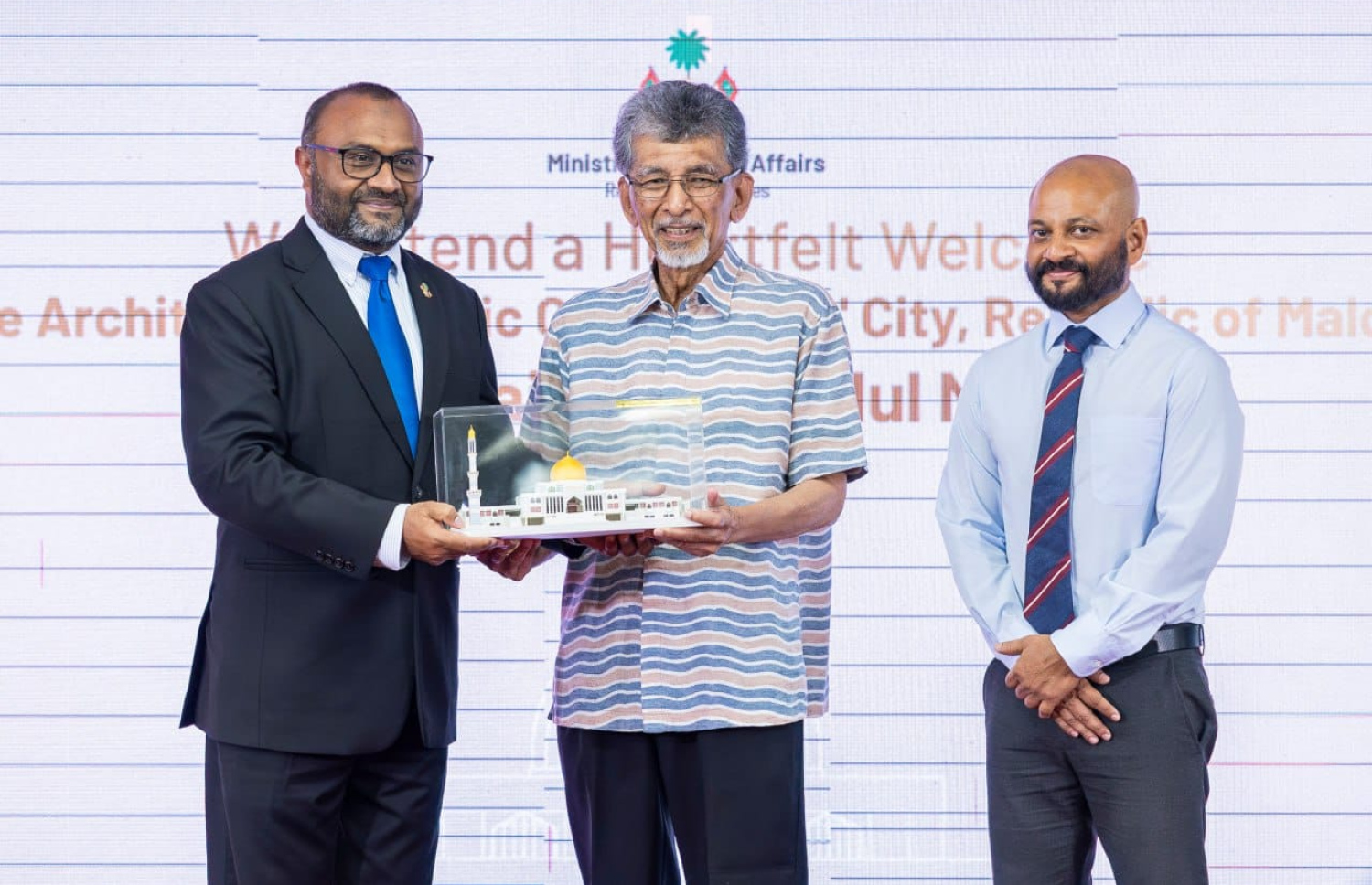Haajeedhaar bin Abdul Maajid, the Malaysian architect behind the design of the Maldives' iconic Islamic Center, has returned to the country after four decades.
Built 40 years ago under the guidance of former President Maumoon Abdul Gayyoom, the Islamic Center remains one of the most important architectural landmarks in the Maldives. Its design was inspired by Malaysia’s historic Bangsar Mosque, blending traditional Islamic elements with a modern touch.
A special ceremony was held yesterday at the Ministry of Islamic Affairs to welcome Haajeedhaar. The event was attended by Islamic Minister Dr. Mohamed Shaheem Ali Saeed, Ahmed Faaris Maumoon (son of President Maumoon), and Abdulla Kamaaluddheen, Vice Chairman of the Maumoon Foundation.
Minister Shaheem called the Islamic Center a “masterpiece” and expressed deep gratitude to Haajeedhaar for his contribution. He said this was a historic moment for Maldives, finally meeting the visionary behind the building that has stood as a symbol of Islamic identity and architectural excellence.
As part of the ceremony, a model of the mosque was presented to Haajeedhaar in recognition of his work.

Highlighting its importance, Minister Shaheem described the Islamic Center as a place of “guidance, knowledge, and worship,” and a central pillar of Islamic governance in the country.
The Islamic Center was officially opened on November 11, 1984, near Republic Square in Malé. Its 133-foot minaret has become a national symbol of Islamic heritage.
The construction of the USD 6 million building was funded by Saudi Arabia, Brunei, Kuwait, Pakistan, Malaysia, and the UAE. All engineering and construction work was handled by four Malaysian companies, with around 50 Malaysian workers involved in the project.
Built across three floors, the mosque can accommodate 4,500 worshippers at once. The ground floor covers 27,066 square feet and houses five classrooms, a library, and a conference hall.
Former President Maumoon’s personal contributions are still visible today. His calligraphy adorns the mosque's nameboard and mihrab. He personally wrote the mosque’s name, Masjid-e-Sultan Muhammad Thakurufaanu Al-Auzam, and also inscribed Surah Al-Fatiha and Ayat al-Kursi within the prayer niche.